And can you imagine your daily life without hot water supply? We do not think so. The best assistant in this difficult issue, of course, will be a boiler (water heater), designed to provide hot water and heat supply. And immediately a completely reasonable question arises - how to make the right choice, properly speaking? Let's try together to figure out for your home.
When choosing a boiler (water heater), you should carefully evaluate the main indicators:
- Boiler type
- Type of heating element;
- Power;
- Housing material
Let's start with the main parameter - the type of boiler (water heater).
A type
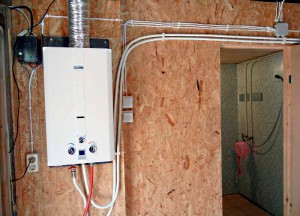
Currently, boilers are of three main types:
- accumulative;
- flowing;
- bulk
Depending on the energy source, the boilers can be: gas and electric.
Most houses use an electric boiler. Such a device operates from a regular electrical network, while not requiring additional connection to power lines of power. This is quite convenient. However, in some regions, for the sake of economy, gas boilers are chosen or, with high performance characteristics, which are not inferior to their electrical counterparts. Gas boilers exist with open and closed chambers. Therefore, when choosing this device, it is also worth considering the means that you are willing to spend on buy a boiler.
Since most consumers prefer electric water heaters, so today we will talk about the choice of such devices.
Cumulative boiler
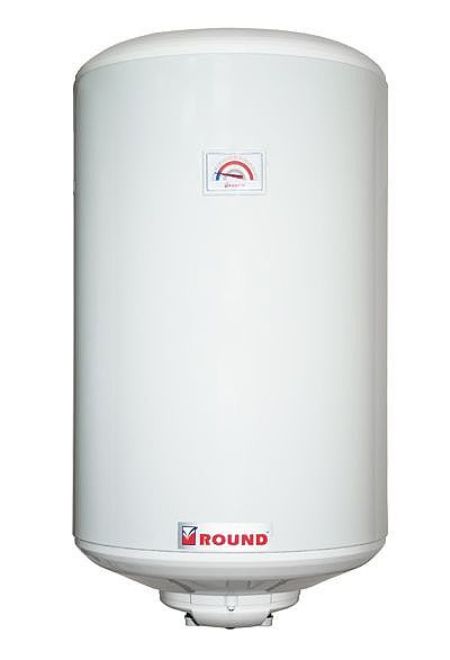
The storage water heater is a special tank filled with cold water, which is supplied under a certain pressure, for further heating up to the set temperature with the help of a TET. In the device of this type, the temperature range can range from 45 to 85 C˚. The temperature can be adjusted either manually or by means of an electronic control unit. If the heated water has not been used completely, it gradually cools down to room temperature. Storage boilers can be gas and electric. In addition, such instruments can be presented in both horizontal and vertical versions. Installation of storage boilers is made exclusively on the wall.
Benefits
- large volume of water;
- low power consumption;
- there is no need for additional wiring during installation;
disadvantages
- impressive dimensions of the tank;
- slow water heating
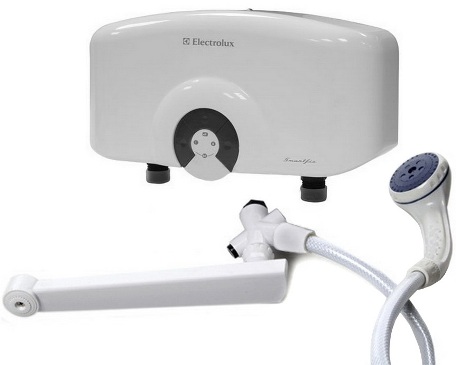
The flow-through boiler, in contrast to the storage analog, has small dimensions, providing heating of large volumes of water. Such a device is capable of maintaining a temperature regime of 60 ° C. Heating of water in flow-through boilers is carried out using a spiral TEN covered with a special insulating coating. The temperature control is controlled by the control unit. As in the case of a storage boiler, the flowing version of the water heater can also be electric and gas. Due to the relatively small dimensions, a flowing water heater allows for various installation options - in the kitchen (above or under the sink), in the bathroom (above or near it), a hidden option (in the wall).
Benefits
- rapid and timely heating of large volumes of water;
- reliable tank and ergonomic dimensions (does not take up much space);
disadvantages
- excessive power consumption (in case of using an electric version of the boiler);
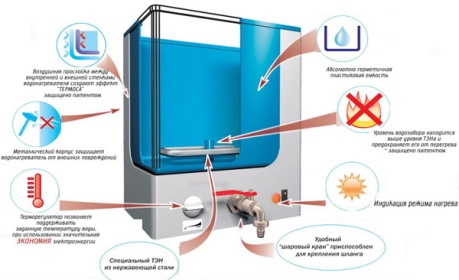
This kind of water heater, as a rule, is installed in houses, in the absence of a central system of cold water supply - cottages, villages, villages. The water tank is a special tank with a top cover, into which cold water is poured manually. As a rule, on the side of such a boiler is equipped with a special thermostat, which allows you to set the desired temperature regime. The boiler can maintain a temperature in the range of 25 to 80 Celsius. The heating element of the filling boiler is located under the tap, which prevents its possible failure. Filling boilers can be of two types: kitchen boilers and shower boilers.
Benefits
- ideal for rural areas in the absence of centralized cold water supply;
- ergonomics of the tank;
- low cost
disadvantages
- possible overheating of heating element
Tank shape
The shape of the tank is not an important parameter for choosing a boiler, but we will still consider it. Water heaters can be produced in three basic forms of the tank: cylindrical, thin (or slim) and rectangular.
The next parameter considered when choosing a boiler is the tank volume.
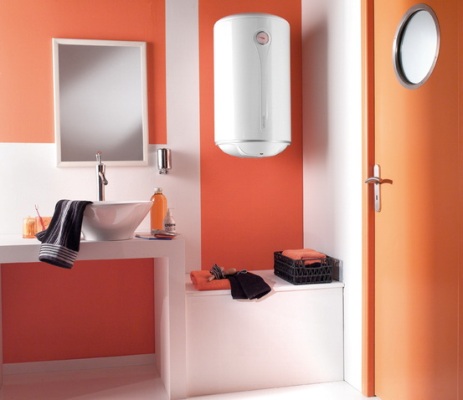
Boiler selection by volume of the tank is a priority, because you can immediately determine the intended purpose of the device. When choosing the volume of the tank, first of all, it is necessary to determine the volume of water that will be required to meet the daily needs of your family.
For correct calculation of the required tank volume, you can use the following data from the table below.
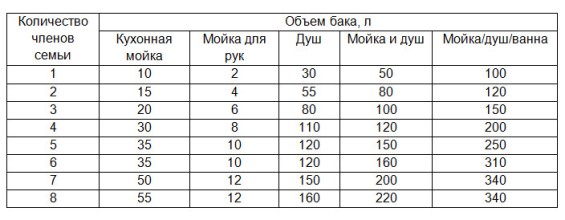
Modern water heaters differ depending on the volume of the tank: 400, 300, 200, 150, 120, 100, 80, 50, 30, 15, 10, 5. Choosing a boiler, it is worth considering the needs of each member of the family in the daily use of hot water.
Water heaters with a capacity of 5 to 15 liters can be installed in the bathroom (for washing hands) and kitchen (for washing dishes), from 30 to 100 liters - for a bath (shower / bath), from 150 to 400 liters - for hot water at home.
Based on the number of family members, experts advise choosing the following tank volumes:
- for 1-2 people - 30 and 50 liters;
- for 3 people - 50 and 80 liters;
- for 4-5 people - 80 and 100 liters;
- for 5-7 people - 120-150 liters
Type of heating element
Heating elements are designed for heating water in electric boilers. In modern models of devices the following two types of heating elements can be installed:
- dry heaters;
- wet heaters
Dry heaters are a heating element placed in a protective tube (glass, mineral or ceramic). Such heating elements are more reliable and durable, in comparison with dry heaters, thanks to the resistance to corrosion and the formation of scale. They also differ in high cost.
Wet TENs have also been called submersible, because they are located directly in the water. Outwardly such a heating element is very similar to the reboiler, which we all once used. This type of electric heater is prone to corrosion and damage, frequent breakdowns and overheating. However, the cost of such a heater is more attractive in comparison with a dry heating element.
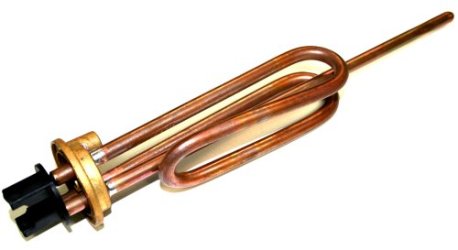
For guaranteed protection of the water heater against corrosion processes, manufacturers equip the devices with a special tread anode (promotes oxidation and dissolution of corrosion and salt deposits on the installed heater).
In addition, almost all models of boilers are equipped with a thermostat for temperature adjustment and a thermometer with a temperature indicator in the tank.
The next no less important parameter boiler selection Is its power.
Power
The power of the device influences, first of all, the rate of water heating. And this means, the more powerful the boiler, the faster it is able to heat the right amount of water. For most models of boilers, the power is 1.5 kW. At the same time, some manufacturers offer consumers a boiler capacity of 1.4 kW and 2.0 kW.
Housing material
Before as choose a boiler for the house, it is worth to carefully study and other characteristics, such as for example the case material. The boiler body can be made of glass-porcelain, titanium alloy or stainless steel. The material plays an important role in the selection, because the quality of the tank depends on its quality, and, accordingly, determines the overall service life of the product.
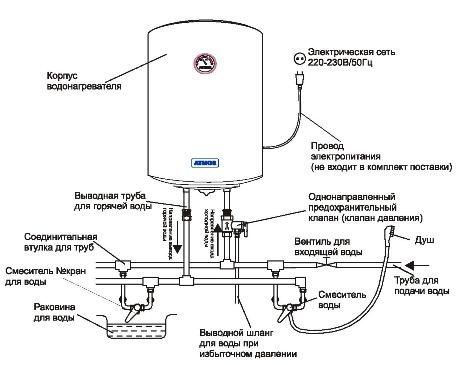
At present, boilers with an inner coating made of glass-porcelain and enamel are in high demand. Enamel-coated tanks cost an order of magnitude less, however, and the service life of such devices is not large. When exposed to high temperatures, the enamel starts to crack, which means that such a boiler will soon become unusable. Water heaters with a stainless steel tank are more reliable and durable, and also more resistant to corrosion. It is also worth noting that in boilers with a tank made of stainless steel, the walls are thinner, susceptible to possible water hammers (pressure drops), which often have a negative impact on the reliability of the entire structure.
When choosing a boiler it will not be superfluous to ask about its heat-insulating layer, which is designed to maintain the high temperature of the water in the tank without additional heating.
As you can see, before buy a boiler, it is necessary to stock up some kind of baggage of information in order to be able to make the right choice in the future. Remember, the main thing is not appearance, but quality! Sincerely we hope that by this article about, we could replenish the necessary luggage of your knowledge in order that you make a profitable purchase! Successful search!
Man is so used to the modern conditions of civilization that excluding one of them causes inconvenience and discomfort. Light and heat are necessary for solving vital problems, and the period of absence of hot water is especially acute. Usually, falling out in the summer months, such an unstable situation causes most of the citizens to stock up and tanks for heating. Avoiding burns and similar inconveniences will allow the acquisition of modern heating devices such as water heaters. How to choose a boiler? To reasonably approach the choice of such an important attribute, it is worthwhile to find out the strengths and weaknesses of specific models, to study the best features of each of them.
We study the parameters of the heating device
The purchase of a boiler for the house must be carried out with all responsibility. First of all it is important to determine what type it will be, for what purposes it is used and to find out its scope, to read discussions at the forum of builders. Will it become a device for permanent or recurrent use? The main guide in choosing is the number of people in the house who will use the device.
Depending on the source of energy received, the boilers are:
- electric;
- gas;
- wood burning;
- indirect.
When choosing a water heater for the operation of a house, one should take into account its main functions:
- type of boiler;
- capacity of the tank;
- model of the heating element;
- power level;
- outer cover of the device.
Different types of boilers
For heating water, modern manufacturers produce 3 types of water heaters:
- accumulative;
- flowing;
- bulk.
Depending on the power source, gas and electric heating appliances are extracted. The second type boiler is used most often, it works exclusively from the network and does not need to be connected to power lines. Gas models are used less often, however such equipment allows to save considerably on inexpensive operation of the device. Their characteristics are high and can fully be compared with the action of electrical analogs.
Important! Before installing the gas water heater, you need the permission of special services, the installation of a chimney and the supply of pipes.
An important requirement is good ventilation, and it is not all at all. A gas water heater of the flow type is suitable for apartments, in private houses they install equipment of any type. You can talk on the installation of the boiler by visiting any construction forum.
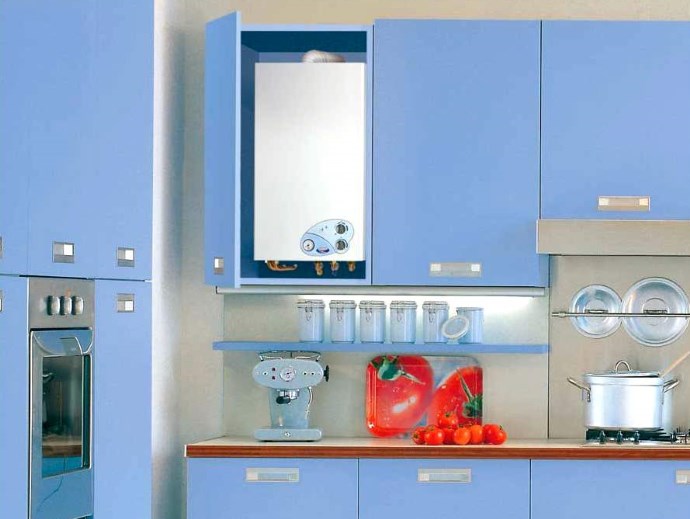
The gas boiler works in a more economical mode and he heats up much faster. Thermal energy for such equipment is provided by the constant combustion of gas. The device of a gas heater resembles appliances powered by electricity, it differs only in heating element. In the first case - it's a burner, in the second - a ten. A disadvantage of gas boilers is the high fire hazard and the difficulty of mounting.
Please note that for normal operation of the storage device and optimum water heating, both liquefied and main gas are suitable. This option will be the best for a country house, this is evidenced by the opinions of masters who visit dacha forums.
Features of electric heating devices
Electric water heater is used most often. This is a kind of thermos with increased volume, connected to the water supply of the house. A special tank with a device connected to it ensures timely heating of water and its supply. The heat exchanger warms the liquid up to 75 degrees and better maintains the temperature thanks to the thermostat, controlling the process by periodically switching on and off.
Installation of an electric boiler in the apartment is a benefit in that you can use hot water in several rooms, for example, in the kitchen and bathroom.
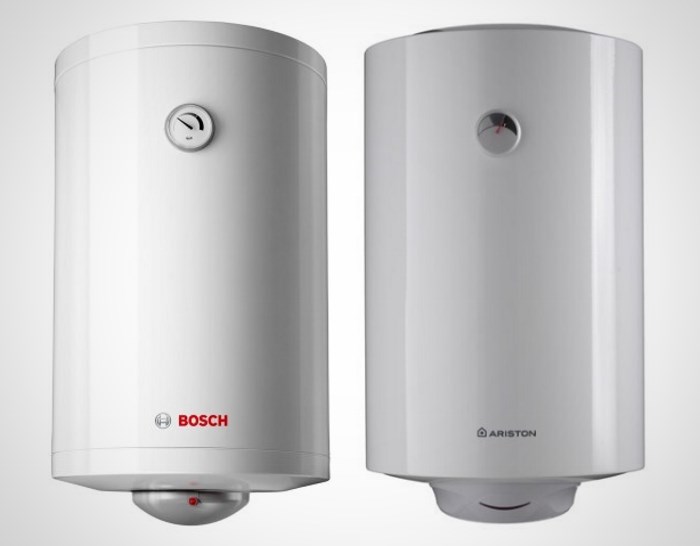
To warm up a given volume of liquid, a lot of time must pass, and the dimensions of this device are quite impressive. However, he has more advantages than shortcomings. Modern industry has taken into account the compact dimensions of living space and has started producing more capacious products of small volume. These models easily fit into a small bathroom or even installed under the sink.
Electric water heaters require a constant inspection for the presence of corrosion, deposits from poor-quality water. Avoid these troubles can be a periodic replacement of the magnesium anode. Good thermal insulation for a long time keeps the temperature of water, in this way it is better to save electricity in the house. These parameters can be changed by diluting the heated liquid with cold water or by setting the device to the average heating limits.
Making the right choice is easy!
How to choose the right boiler? This question on the construction and dacha forums sets a lot of buyers who decided to purchase the device. An important point in choosing is the volume of capacity.
10-15 liters will be enough for washing a small amount of dishes, but it is not suitable for taking a shower. For a large family it is better to buy models in volume of 50-80 l.
A lot of useful information can be gleaned by reading forums for builders, where users share their experience and can help in various matters.
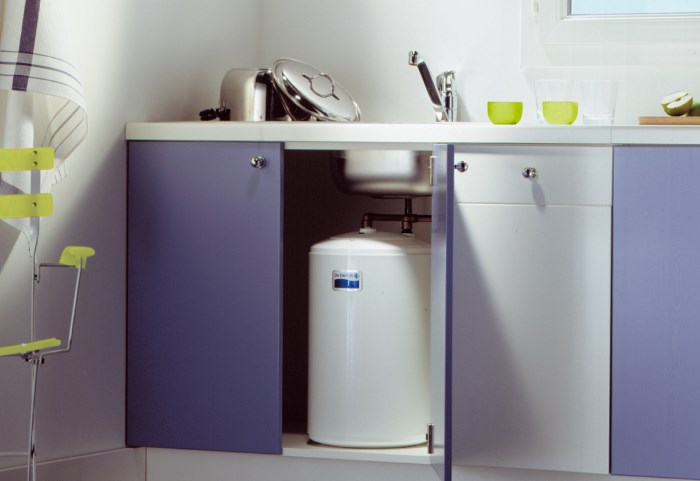
Features of storage boilers
How to choose a boiler in an apartment? To understand which model is suitable for permanent operation, it is important to study the characteristics of each type, volume. Thus, the storage heat exchanger has:
- container for water;
- 2 tubes connecting to the water intake system;
- thermostat;
- a heating element;
- thermometer.
The tank of the set volume is placed in a metal casing and the holding brackets are fastened to it. To maintain the temperature at the proper level, it is better to isolate the tank with any material such as polystyrene foam, polyurethane, mineral wool. Before installation, it will not hurt to read various forums, channels of masters, learn the advice of professionals.
Thanks to the built-in heating system, water heating is 45-85 degrees. The figures are adjusted manually or by means of an electronic control panel. Unused water remains in the tank, gradually cooling to room temperature.
The best sides of storage devices:
- capacious volume of the tank;
- low power consumption;
- additional wiring is not required during installation.
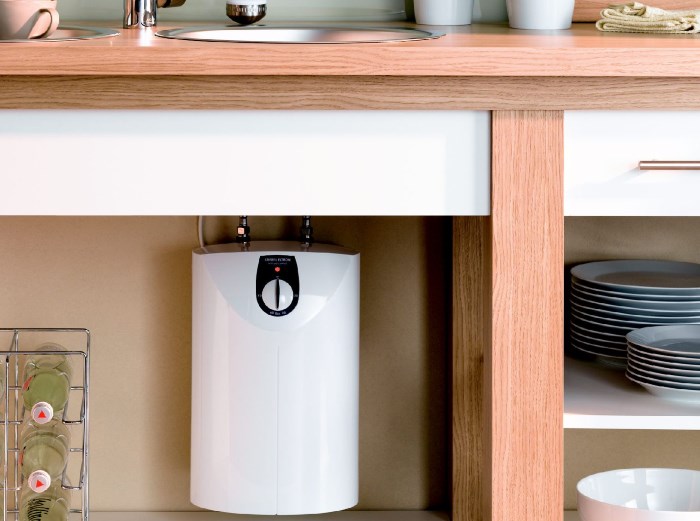
Specificity of flowing equipment
Flow-through boilers for heating water have small dimensions. The spiral heating element helps maintain the temperature at 60 degrees. To ensure that at the time of heating the scale does not form scale, and the equipment has worked as long as possible, its surface is covered with high-quality insulation. The temperature mode in such a device is set using a control unit. A small volume of the device allows you to install it anywhere in the house. More information on the operation of such devices can be found by visiting the thematic forums devoted to construction and engineering.
Pluses:
- obtaining a significant amount of hot water in a short period of time;
- reliability and ergonomic design.
A shortage of devices of this size will be a high percentage of energy consumed.
Indirect heating of boilers
An indirect heating device is a boiler that heats the water from the existing heating system. Its tank is connected to a coil, which acts as a heat exchanger. The indirect water heater heats the water in the pipe by gradually transferring heat from the liquid to the tank. The economy of the method is explained by the absence of costs for gas or electricity. In indirect boilers, the fluid movement is controlled by a pump connected to a hot water system.
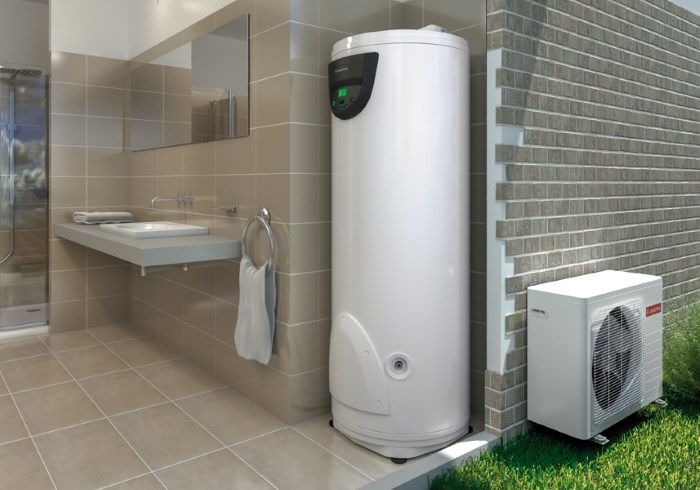
The operation of these boilers does not overload the electrical network and is used only during the heating season. Indirect heaters meet high levels of performance with minimal cost. The internal part of the device does not come into contact with running water, ensuring safety and increasing its service. In indirect type boilers in the process of recirculation, hot water immediately enters the tap. For heating, they can use several alternative sources. In indirect devices, the inner shell is made of plastic, steel.
The steel or brass exchange device moves the coolant from the common boiler. Indirect water heaters are reliably protected from pressure increase by a special safety valve and thermostat. The external data of the case and the volume can be any, most often there are models "one in one", double tanks are meant. However, such indirect models are practically not produced.
Connect such a boiler by entering for cold water and removing it for hot water. In boilers of indirect type, the heated substance flows directly to the consumer.
Popular manufacturers of water heaters
Forums on construction and technology contain thousands of reviews on different brands of water heaters. Famous companies that have proven themselves as proven and popular manufacturers:
- Viessmann;
- Buderus;
- Vaillant;
- Junkers Bosch Gruppe.
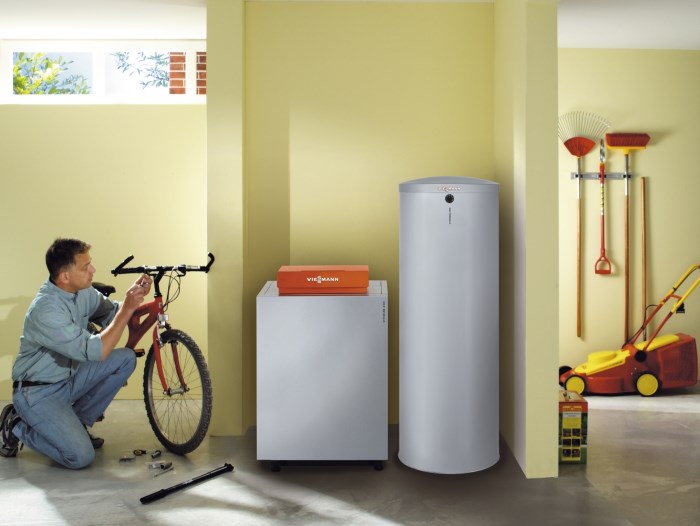
Of these, the French enterprises Saunier Duval come to the forefront, the construction and technology forums are full of good reviews about them. Polish companies are known by the name of Galmet, and Italian companies are represented by Beretta and Baxi. Choosing a manufacturer, you need to take into account its ranking on the world stage. German firms produce very high-quality products. The level of their reliability and durability is confirmed by long-term practice of use.
Turkish and Italian firms stand on the step below, however, feedback on any construction forum about them is not bad. This gradation is due to the use of Chinese parts by selected manufacturers. These companies can not be classified as bad, just their products can not withstand a very long period of operation and come off the race before the deadline.
So, the information in this article is enough to answer the question: "How to choose a boiler?". His study will highlight many exciting problems and will help to cope with the problem perfectly.
The temperature and pressure monitoring in the electric boiler is controlled by means of a thermal sensor. The water pressure is used to set water. Water, getting into the tank, is retained in it by a non-return valve. With its help, air bleeding is also carried out, which can get into the water supply system, when replacing the failed unit. A tap is installed on the water supply from the boiler. With its help, you can cut off water, in case of replacement or repair of any part.
An electric boiler is more efficient to use around the clock. The water in it must be at all times, and it must have a separate, grounded outlet. If there is no ground loop, it needs to be done (this fact is important for safety reasons against a short circuit to the housing, as a result, all the water in the system may be under voltage).
For a large house where one and more families live, it is advisable to use a floor, centralized boiler for a capacity of 100 to 200 liters. For a summer residence such boilers will not approach, as expenses for its heating will be enormous. How much should I choose a boiler?
The optimal boilers for a holiday home will be 50-100 liters capacity with a 2 kW tee. He will quickly heat water (for 1.5 to 3 hours), while the cost of electricity will be minimal. The most famous manufacturers are: Termor, Atlantik, Vaillant, Drazice.
 Gas boiler. The presence of a gas main near the house and its branching directly into the house, makes this method more efficient, and energy carriers - cheaper. The choice of a boiler for a house running on gas should be stopped at such brands as Ariston at 95 liters, Vaillant at 130 liters, Viessmann. These are the most common, reliable and in-demand gas water heaters for dachas.
Gas boiler. The presence of a gas main near the house and its branching directly into the house, makes this method more efficient, and energy carriers - cheaper. The choice of a boiler for a house running on gas should be stopped at such brands as Ariston at 95 liters, Vaillant at 130 liters, Viessmann. These are the most common, reliable and in-demand gas water heaters for dachas.
When using any gas equipment in the room should be a reliable system of exhaust ventilation.
Disadvantages of gas boilers:
- For the installation of gas equipment it is necessary to take the appropriate permit from the gas service in the place of residence. Also, without them, the installation of the boiler will be illegal;
- It is necessary to issue the appropriate package of documents for the registration of gas equipment. This may take some time;
- In the gas system, it is necessary to have a low pressure;
- To install a gas boiler you need more space.
All work with equipment will cost a lot.
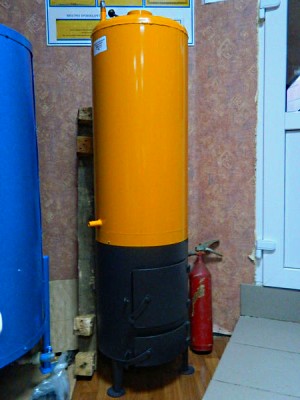 Wood-fired boiler. The rules for choosing a wood-fired boiler are the features of mounting the firebox: separate or welded. With the welded firebox, the heating time is reduced by 30%, but in case of a breakdown, such a furnace is very difficult to repair. Because most of the summer residents, they choose a wood-fired boiler with a separate furnace.
Wood-fired boiler. The rules for choosing a wood-fired boiler are the features of mounting the firebox: separate or welded. With the welded firebox, the heating time is reduced by 30%, but in case of a breakdown, such a furnace is very difficult to repair. Because most of the summer residents, they choose a wood-fired boiler with a separate furnace.
A wood-burning boiler can serve as a heating appliance. As fuel, everything that burns is used, but it does not have any chemical substances (solid fuel, wood, chips, paper, cardboard, pellets).
The wood water heater is used in the location of the cottage, where there is no electricity, no gas main. Their structure and principle of operation are very simple. Put a tank in the furnace. Inside the tank a smoke tube is mounted. With its help, water is heated.
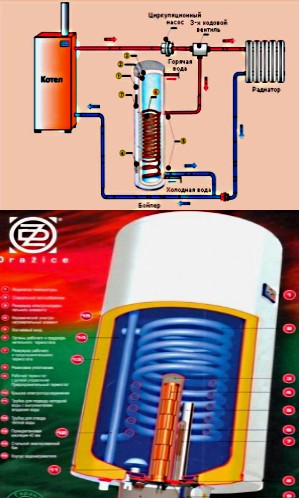 Boiler indirect heating. This kind of water heater, as a source of heating, uses the heated water of the heating system. Its design is a container in which a coil (a heating pipe) is mounted. It plays the role of a heat exchanger - passing the heated water through the pipe, gives heat to the water in the tank, heating it to the desired temperature.
Boiler indirect heating. This kind of water heater, as a source of heating, uses the heated water of the heating system. Its design is a container in which a coil (a heating pipe) is mounted. It plays the role of a heat exchanger - passing the heated water through the pipe, gives heat to the water in the tank, heating it to the desired temperature.
This method of providing a home with hot water is the most economical, since it does not require additional expenditure of electricity or gas. The circulation of water is carried out by means of a special pump, which is connected to the DHW circuit (hot water supply).
To date, there are many manufacturers that produce quality products.
How to choose an indirect heating boiler from a large range of models? The most popular and reliable boilers are producers Drazice, Acv Smart, Viessmann, Buderus, Vaillant, Junkers Bosch Gruppe, Reflex, French company Saunier Duval, Polish Galmet, Italian Beretta and Baxi.
Which boiler to choose for a summer residence?
If we talk about the advantages and disadvantages, we need to consider the use of each type of boiler in a particular case.
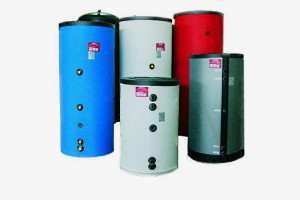 When choosing an electric boiler, one must take into account its electricity consumption. For summer residents who visit the dacha infrequently, this boiler will be one of the most convenient, since it is enough to plug it into the outlet to start it. While unpacking things, the water will have time to warm up to the desired temperature. Here it is necessary to take into account the simplicity of its installation, which can be carried out independently, without additional permissions.
When choosing an electric boiler, one must take into account its electricity consumption. For summer residents who visit the dacha infrequently, this boiler will be one of the most convenient, since it is enough to plug it into the outlet to start it. While unpacking things, the water will have time to warm up to the desired temperature. Here it is necessary to take into account the simplicity of its installation, which can be carried out independently, without additional permissions.
The review of gas boilers will make it possible to determine the expediency of installing them at the dacha, perhaps it is more convenient to install them in the home of a permanent residence. The high cost and method of installation with the involvement of the gas service, as well as a long time of obtaining permits, can not economically justify itself.
Solid-fueled boilers, relative to previous heating elements, are much more economical, since they can be used not only for heating water, but also as a heating device. But here it is important to ensure that it quickly does not cool down. To do this, you need to constantly be near it and throw up fuel.
The ideal option would seem to be an indirect heating boiler. But in the summer, when the heating in the house is off, the boiler will lose its functions.
Proceeding from this, the question of which boiler to choose for a summer residence, it should be answered that the electric boiler is the best option for all cases of life. Even if the dacha is located far from the city, where there is no electricity, you can apply for the operation of the boiler.
A water heater or boiler is a device for constant water heating connected to the water supply system. Structurally it is a large container equipped with a heat source in various configurations. In another way, boilers are called storage type water heaters. The use of such devices is advisable in the premises in which there is no connection to the hot water supply line.
In specialized stores, each buyer will be able to find gas or electric water heaters, combined or indirect heating boilers. It is difficult to say which of them are the most popular and preferred when used in homes and apartments. Here, as in many other cases, everything depends on the tasks imposed by the consumer on the object.
In order to facilitate your choice, a rating of the best boilers was compiled, based on feedback from users, comparing the characteristics of a large number of models and popularity among buyers.
unique templates and modules for dleThe best gas boilers
Installation and start-up of such heaters is mainly carried out in large-scale buildings and cottages, as they allow heating a large amount of water with minimal time spent at low fuel consumption. Given that prices for natural gas are relatively small, even in this case it can always be replaced by alternative fuel.
Heater power control is performed by built-in regulators, which allows eliminating emergencies. Of the minuses, it should be noted that the installation of such a boiler requires the approval of competent state structures, regulating both the correct installation, and the presence of a separate extractor for the removal of waste gases.
3 American Water Heater PROLine
Reliable floor heating boiler for gas heating
The best electric boilers
Electricity is the most affordable type of energy. On the basis of this fact, the idea arose to create water heaters using electricity as a source of heat. The principle of operation of electric boilers is simple: a thermocouple is placed inside the housing, which heats the water in the tank to the desired temperature, and then turns off under the action of the installed safety thermostat.
Of the advantages of the system should be allocated relatively low cost relative to other types of water heaters. Power is supplied from a two-phase network. In addition, it is possible to dissolve hot water on several objects at once. The main disadvantage of electric boilers is their inefficiency. High-powered, they slowly heat water, consuming a large amount of electricity.
3 Thermex Sprint 80 SPR-V
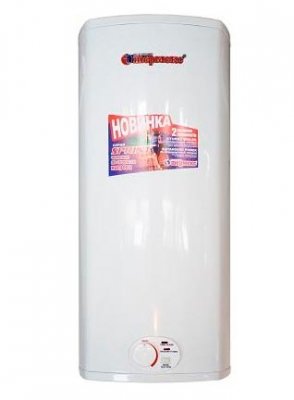
Reliable wall-mounted hot water boiler
The best indirect heating boilers
Economical and efficient, indirect heating boilers are used for installation in rooms with central heating. In its essence, it is a tank connected to the DSP network, mixing, heating and distributing water through several water-pumping systems. A heating boiler can also be connected to it, the heat element of which will become a heater for water circulating in the storage tank.
The main advantage of such boilers is economy. The consumption of electric energy is steadily low. However, their cost is able to hit the wallet of the average consumer.
3 Gorenje GV 200
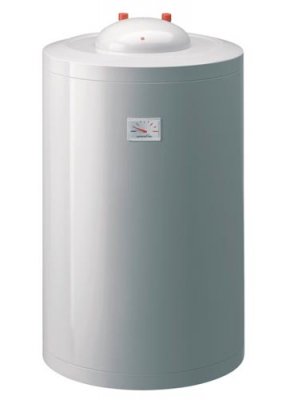
Sometimes for reliable and stable operation you do not need to buy expensive equipment with bloated functionality, for additional options often become the main cause of its failure. Obviously, the same opinion was shared by Gorenje specialists who created the model of the Gorenje GV 200 boiler. It has a very limited set of functions, which has a beneficial effect both on price and duration of work. The water in a 200 liter tank is heated by a heat exchanger made of stainless steel. The maximum heating temperature is limited to 75 degrees Celsius and is regulated mechanically.
The large capacity of the tank makes it feasible to distribute and supply water to several points of draw-off. In the rest it is a standard model, the price for which fluctuates around 22-23 thousand rubles.
2 Protherm FE 200/6 BM
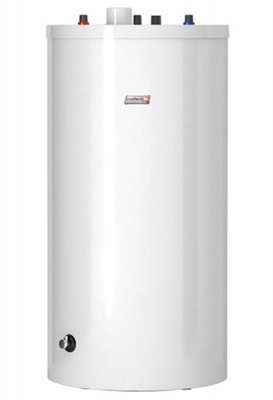
A reliable and popular indirect heating boiler
The best combination boilers
The operation of combined water heaters is based on the combination of several types of heating. Since the capacity of the tank is no different from water heaters of other types, and the combination is realized mainly in boilers of indirect heating, then such capacities are quite sufficient for rapid heating of water. Thermal insulation in them retains a high temperature of the liquid for a long time. For more reliable operation, it is necessary to provide installation of a boiler, at least one-circuit.
They are ideal for installation in private homes, as well as in large, spacious apartments. The expediency of their installation in low-tarrels is doubtful, since such a heater will occupy a large space.
3 Gorenje GBK 150 RNB6 / LNB6
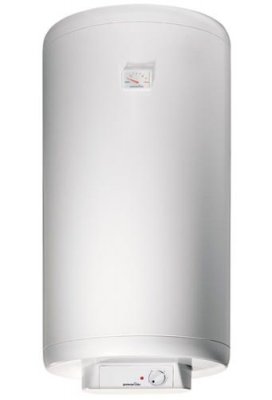
The best heating temperature. Best Functionality
And reviews
Country: Slovenia
Average price: 26 214 руб.
Rating (2017): 4.5
Honorable third place goes to the boiler Gorenje GBK 150 RNB6 / LNB6, which has good performance in terms of functionality. For heating 150 liters of water to a temperature of up to 85 degrees Celsius corresponds to the installed heat exchanger and two tubular electric heaters, the total power of which is 2 kW. The heating time to the maximum point is 345 minutes, after which the system equipped with a thermostat switches off all the heat elements and switches the combined indirect heating boiler to the temperature maintenance mode. The installed temperature sensor also responds to the prevention of freezing.
With a fairly large size, the weight of this model is 72 kilograms. Its installation is preferable for large houses or cottages, as the volume of water is sufficient even for increased consumption.
2 Thermex Combi ER 100V
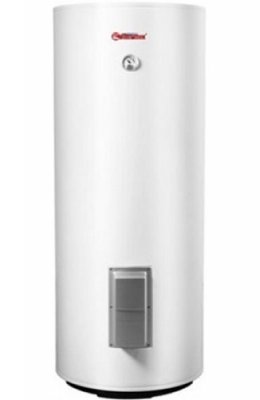
The best combination of compactness and reliability. Best price
And reviews
Country: Italy
Average price: 24 230 rub.
Rating (2017): 4.6
As its name implies, the second place went to Thermex Combi ER 100V for the combination of small dimensions and reliability, marked by numerous buyers. A glass-ceramic tank with a capacity of 100 liters is placed in the body of a boiler, the total weight of which is only 46.4 kilograms. It combines the indirect and electrical heating methods, which are realized with the help of a heat exchanger and a tubular electric heater with a power of 1.5 kW, respectively.
There is one good feature in the "Termix" model. The pre-installed magnesium anode, which protects the inside of the storage water heater against corrosion, is double, not single, as on the vast majority of other models. The cost of such a boiler is relatively low and fluctuates in the range of 23-25 thousand rubles.
1 Drazice OKC 160 / 1m2
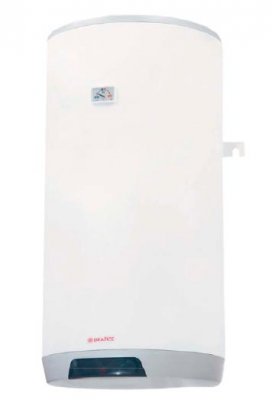
The best ratio of price and quality
And reviews
Country: Czech Republic
Average price: 26 180 rub.
Rating (2017): 4.7
The capacious combined water heater Drazice OKC 160 / 1m2 deserves the title "the best". It seems that this model has no minuses. It is not as bulky as other versions of boilers, and weighs nearly 72 kilograms. Equipped with a tank of 160 liters, the water in which is heated by a heat exchanger and installed a ceramic tubular electric heater of dry type, the power of which is 2.2 kW. The maximum power of the heat exchanger is limited to 24 kW. This is enough for a tangible warm-up of the full volume of water in just 7-10 minutes.
For correct operation this boiler model "Dražice" is equipped with protection against excessive pressure, overheating, and also with an anti-corrosion magnesium anode. The average cost is 23 thousand rubles, which is an acceptable price for storage water heaters of this type.
How to choose the right boiler for your home. What should I look for when choosing a boiler: volume, shape, tank, electrical part. Video of the choice of the boiler.
How to choose a boiler
Even in spoiled by municipal services large cities can not boast of hot water supply. Annual inspections of heat networks, frequent accidents, repair of neighbors with disconnecting the entire entrance from the water - this is familiar to many. In other cities, the situation is often even more bleak - in almost all populated localities of Russia the centralized supply of warm (hot call it tongue does not rise) water or none at all, or a maximum of several hours a day. In such conditions, it is simply necessary to install an autonomous water heating system. There are only 3 different options: they are gas boilers, as well as running and storage electric water heaters. To install a boiler, you need a permit, which requires a considerable amount of time (at best). A flow-through water heater requires the presence of an electrical wiring of high power (about 10-20 kilowatts), so this option is not available for most residents of our country. It is logical that the best way to provide yourself with hot water is to install the house of an electric storage water heater, also called a boiler. Let's find out how to choose a boiler.
general description
The boiler is a special insulated tank. Its volume can be from 5 to 300 liters. The boiler has 1 or 2 tubular electric heaters (TEN) and a thermostat that turns off the heater when the water reaches the desired temperature and turns on when it cools.
This is interesting: The full tank can be heated to the maximum temperature (usually about 70-80 ° C) for a time of 15-20 minutes to 3 hours or more. Depends on its effectiveness on the volume of the tank and the power of the device.
What should I look for when choosing a boiler?

Correctly selected boiler - a guarantee of comfort
Volume of the tank
Undoubtedly, the first question to ask yourself before buying a storage heater is how much tank will be enough? The answer "the bigger the tank the better" will not be right here - aside from the obvious economic factor associated with the impressive energy consumption, a huge boiler will take up a lot of space in your house, besides, the heating time of water will be on average larger than the small one . That is, rationally assess your needs.
If hot water even appears sometimes in the pipes, and a counter is installed on it - you can independently calculate the required volume. The total value should be increased by 30%: the fact is that simultaneously with the selection of the heated liquid from the tank, cold water is added to it, and as a result of mixing, its yield is about 70-75% of the nominal capacity.
If such a method of determining the volume can not be applied - you can use a special table.
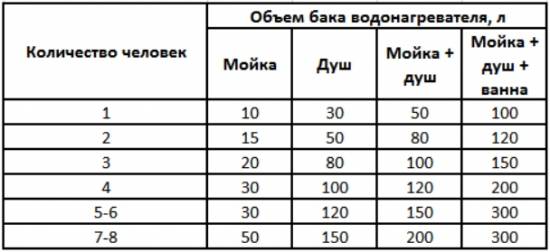
Table for determining the required volume of the boiler
It should be noted that the figures in the last column of the table are calculated from the consideration that one person takes a bath, and then a little more water remains (for example, for washing dishes). Also take into account that the table provides data for urban residents - in suburban areas, consumption is usually higher by about 25-50%.
Of course, the choice of the volume of the boiler is influenced by the possibilities of installing this device in a particular apartment. In addition to the available free space, it is important to pay attention to the wall on which the heater will be hung. As practice shows, basically the boiler is installed in a bathroom, the walls in which do not always have the necessary strength for hanging a device weighing tens (or even hundreds) of kilograms. Doubting the strength of the wall, you can put the heater on a specially made floor base.
Good advice: In some cases it will be more advisable to buy 2 boilers. For example, with the regular use of a sink and a rare shower, there is no need to maintain a 70-degree temperature all the time in 100 liters of water. In this case, you can install the first heater for the bathroom (with a large volume), and the second - for washing (usually enough and 15 liters).
Vertical or horizontal?
Today they are produced as boilers intended for installation in horizontal or vertical position, and models that can be installed both, and so on. Nevertheless, if possible - it is desirable to choose a vertical heater.The fact is that the hot and cold water in the tank is naturally separated - the heated liquid that has a lower specific gravity rises, leaving the cold bottom. In this case, the smaller the total area of their contact zone, the more slowly cooling will take place. Consequently, the boiler will have greater energy efficiency.
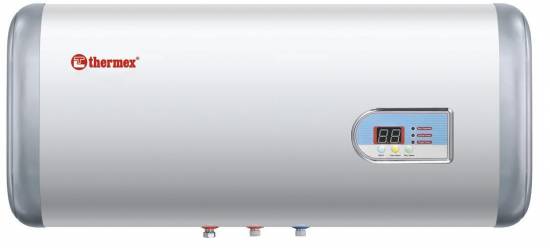
Modern horizontal boiler Thermex
That is, heaters with horizontal placement should be bought only if the space for installing their vertical counterparts is not enough.
The form
The domestic market offers boilers that represent 3 form factors:
- Ordinary (cylindrical in shape, resembling a barrel). Their diameter is related to the height in a proportion of about 1: 2.
- Thin models ("slim"). For them, this ratio is 1: 2.5, 1: 3, 1: 5, and so on.
- Rectangular.
Useful information: The latter type, as a rule, has a size comparable to that of cylindrical models, however it makes it possible, if necessary, to fit the boiler into the space of the wall niche. "Sliema", in addition to saving usable space in the house, also guarantees a slightly larger yield of warm water.
Heaters of a small volume (less than 15 liters), intended for installation under the sink, are mainly made in cases of rectangular shape.
Figure 5: Compact boiler mounted under the sink
Tank
Selecting the material of the tank is a rather difficult task. In many modern boilers, the casing is made either from steel with enamel or glass coating, or from special types of stainless steel. Naturally, both kinds have both pluses and minuses.
Tanks with a steel coating are much more reliable than stainless analogues. Choosing from a pair of heaters with approximately the same price, do not forget: the stainless case has less thick walls, therefore, they are not particularly durable. This is important if you have a hydro surge in your water network (instantaneous pressure jumps). In this case, a less durable tank will have a high chance of getting damaged.

Electrolux water heaters with stainless steel tank
Nevertheless, stainless steel has better corrosion resistance. At the same time, the coating on tanks of plain steel can begin to crack after a while, and the boiler will become unusable. The rate of deterioration of the coating depends primarily on the composition of the water - the index of its hardness (the more salts it contains - the more scale is formed), as well as the presence of fine abrasive particles (for example, miniature grains of sand).
Electrical part
Inside the tank of each boiler there is a heating element, in fact, a heating liquid. Some models are completed simultaneously with a pair of independent heaters, which is very convenient. In conditions of increased load on the electric network from other electrical appliances of the apartment, one heater can be temporarily switched off, thereby preventing the activation of automatic protection. If other powerful devices are turned off - it is more convenient to turn both heaters on, accelerating the heating of the water.
Modern heaters have two types of heaters - wet and dry. As it is not difficult to understand by name, the first with their metal surface constantly contact with water in the tank.
It's interesting: Dry heaters are separated from the water by sealed tubes - glass, ceramic or mineral. They are more durable and guarantee the highest level of electrical safety. In addition, they form less scum. The disadvantage is a higher price.
Heating element for boiler
In order to provide additional protection against corrosion processes on the tank surface, all boiler models are equipped with electrochemical protection systems based on the tectonic anode (most often magnesium). This element is slowly oxidized and dissolved during operation, ensuring the integrity of the tank metal.
The internal thermostat controls the heater on and off, maintaining the user specified temperature with an accuracy of approximately 4-5 ° C. In modern boilers, the temperature of the thermostat can be adjusted, but in the part of models the regulator is hidden under the protective cover. It would seem that this is not particularly convenient, but, as practice shows, the desire to rotate the knob of the regulator disappears in a few days - after the exact adjustment of the water heater according to individual needs, it is rarely disturbed.
Some boilers are also equipped with a built-in thermometer that shows the actual temperature in the tank on a dial gauge or digital indicator. With continuous operation, this function becomes useful.
Assembly, installation, maintenance
When choosing a boiler, pay attention also to whether the accompanying parts are included in the kit - they will still be needed for installation, and a separate purchase of them will result in an additional expense item. It is desirable, in addition to the heater itself, to obtain a power cable of the required length and a special blasting valve (installed at the inlet of cold water to protect the tank from excessive pressure).
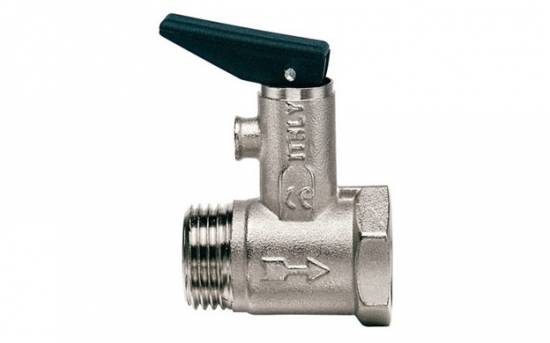
Discharge valve with manual pressure relief
Independently you will need to purchase fasteners, pipes for connection, the necessary connecting fittings, a drain pipe (put on the valve and brought to the near sink or directly into the sewer) and several valves. If possible, it is worthwhile to install also a filter for rough water purification, as well as a separate circuit-breaker for the supply line of the water heater.
Helpful Hint: Generally, the manufacturer does not object to the user installing the heater himself. However, consider that in order to preserve the possibility of warranty repair, you must strictly follow the requirements prescribed in the instructions.
As a rule, these requirements are reduced to such a set:
- The presence of properly implemented protective earthing (note that common variants of the type "on the housing of the housing shield" or generally "on the battery" are not considered such).
- Correspondence of the real cold water pressure inside the water pipe to the working pressure of the heater selected by you. If these values do not match, you need to install a pressure reducer.
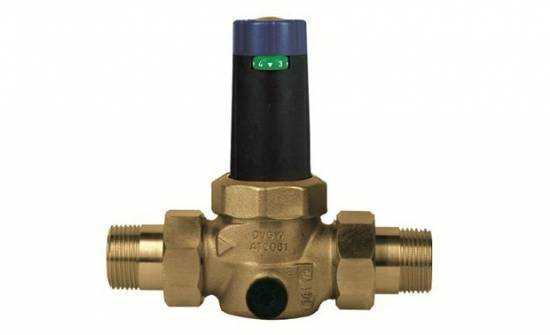
Adjustable water pressure reducer
- It is necessary to connect the boiler to the water pipe with plastic or metal-plastic pipes (it is forbidden to use flexible rubber hoses).
- The presence of free space near the boiler for unhindered access to the device (the figures are specified in the instructions).
Take advantage of our advice - and you can choose a boiler that perfectly meets all your requirements!
